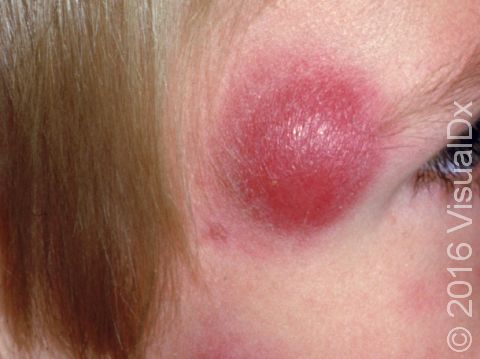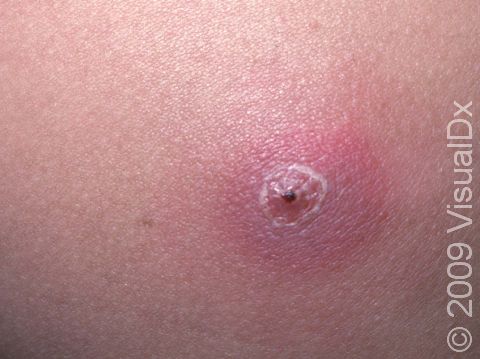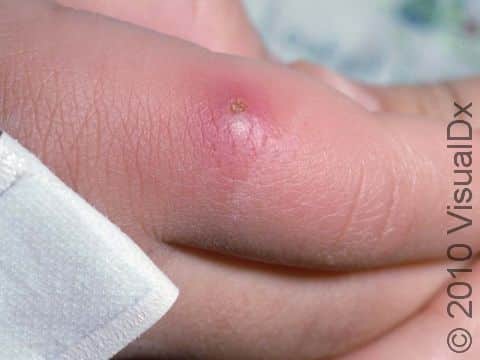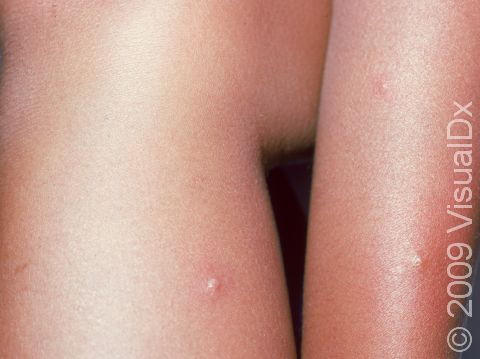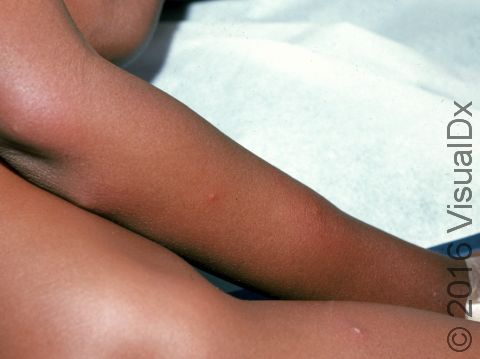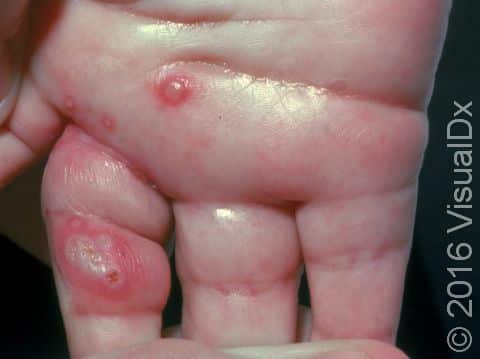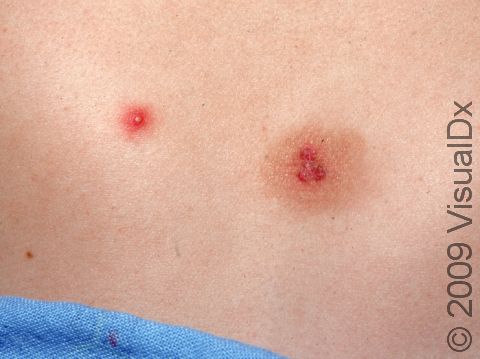Boils (Furunculosis)
Boils (furuncles) are painful pustules (pus-filled bumps) on the skin resulting from the deep infection of a hair follicle. The infection is usually caused by a type of bacteria called Staphylococcus aureus (commonly known as “staph”). Many people are carriers of the staph bacteria, meaning that it normally lives on their skin or in their nose without doing them any harm. Tiny breaks in the surface of the skin, such as those caused by friction or scratching, however, can help the bacteria gain entry into and infect the hair follicle, resulting in a boil.
Boils may resolve with simple self-care measures, but the pus needs to drain in order for them to heal completely. Many boils eventually drain on their own, or they can be drained by a medical professional. Antibiotics may also be prescribed. Untreated boils can enlarge or grow together to form a giant multi-headed boil called a carbuncle. Rarely, the infection in the skin can get into the bloodstream, leading to serious illness.
Who's At Risk?
Boils are most common in teenagers and young adults, and they are more common in males than females.
People who are particularly prone to developing boils include:
- Athletes participating in contact sports or using shared equipment.
- Individuals with a weakened immune system, diabetics, and those taking certain medications.
- Individuals with another skin condition that may lead to scratching or otherwise injuring the skin (eg, eczema, scabies).
- Carriers of staph.
- People who are overweight.
- Individuals with poor nutrition.
- People living in close quarters with others.
Signs & Symptoms
A boil is a tender lump on an area of the skin that also has hair. In lighter skin colors, boils may appear red or purple, and in darker skin colors, they may appear purple or brown. The most common areas for boils to occur are places where there is friction, such as the buttocks, armpits, groin, neck, shoulders, and face. The skin surrounding the boil may look swollen and red or purplish. The center of the boil eventually becomes filled with yellow or white pus that you can see just under the skin’s surface.
Self-Care Guidelines
Applying warm compresses to the affected area on the child for 20 minutes at least 3-4 times a day may ease the discomfort and help encourage the boil to drain. If the boil starts to drain, wash the area with antibacterial soap and apply some triple antibiotic ointment and a loose bandage. Repeat this process of cleansing and bandaging the area 2-3 times a day until the skin is healed.
Boils can be very contagious. Do not allow the child to share clothing, towels, bedding, or sporting equipment with others while they have a boil. Have your child wash their hands frequently with antibacterial hand soap to avoid spreading the infection to others.
Have the child use an antibacterial soap on boil-prone areas when showering and dry the skin thoroughly after bathing. The child should avoid tight-fitting clothing and activities that cause a great deal of sweating.
Do not pop the boil yourself or allow the child to pop the boil, such as with a pin or needle. Doing so may make the infection worse.
Treatments
The pus inside a boil needs to be drained thoroughly before the body can completely clear the infection. If the boil does not drain itself, your child’s medical professional may perform a simple procedure using a sterile needle or small blade to “nick” the skin over the top of the boil so the pus drains out. The area will then be cleaned and bandaged, and you will be given instructions to wash, apply antibacterial ointment, and re-bandage the area on the child several times daily. The child may also be prescribed a course of oral antibiotics.
The child’s medical professional may choose to collect a swab of the pus for laboratory analysis and swabs from other areas of the body (eg, nose, armpits, and/or anus and genital area) to determine if they are a carrier of staph. If the child is a carrier, they may be prescribed a topical medication to be applied to the inside of the nose and/or oral antibiotics for several days. These measures can help to prevent a recurrence of boils and to decrease the possibility that the child may unknowingly spread the bacteria to others. If your child is prescribed antibiotics, be sure they take the full course of treatment.
Visit Urgency
See the child’s medical professional if:
- There are multiple boils or if the boil(s) increase in size.
- The child has a fever or chills, severe pain, or otherwise feels unwell.
- The boil fails to drain.
- The area of redness surrounding the boil begins spreading.
- The child has diabetes, a heart murmur, a problem with their immune system, or is taking immune-suppressing medications when the boil develops.
- The child has had repeated outbreaks of boils.
If your child is currently being treated for a skin infection that has not improved after 2-3 days of antibiotics, return to their medical professional.
References
Bolognia J, Schaffer JV, Cerroni L. Dermatology. 4th ed. Philadelphia, PA: Elsevier; 2018.
James WD, Elston D, Treat JR, Rosenbach MA. Andrew’s Diseases of the Skin. 13th ed. Philadelphia, PA: Elsevier; 2019.
Kang S, Amagai M, Bruckner AL, et al. Fitzpatrick’s Dermatology. 9th ed. New York, NY: McGraw-Hill Education; 2019.
Paller A, Mancini A. Paller and Mancini: Hurwitz Clinical Pediatric Dermatology. 6th ed. St. Louis, MO: Elsevier; 2022.
Last modified on June 14th, 2024 at 1:49 pm

Not sure what to look for?
Try our new Rash and Skin Condition Finder
